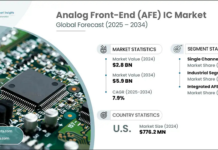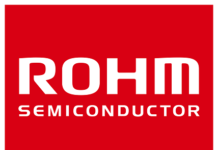
Chips Act 2.0:
- SEMI Europe submitted recommendations for Chips Act 2.0 to build a realistic, secure semiconductor ecosystem.
- A Dutch-led coalition of all 27 EU countries wants semiconductors treated as strategic like aerospace and defense.
- Framing chips as defense-critical may bring stronger funding, export-control advantages, and R&D priority.
- Chips Act 2.0 is a directional signal: Europe intends to stay competitive in semiconductors and focus on cost, risk, and regional diversification in supply chain
SEMI Europe has submitted recommendations to Brussels for a revised “EU Chips Act 2.0.” The goal is to move beyond headline-grabbing megafabs and build a more realistic semiconductor ecosystem that Europe can actually deliver.
At the same time, a Dutch-led coalition of all 27 EU member states is asking the European Commission to treat semiconductors as a strategic industry on par with aerospace and defense.
Why Is There a “Chips Act 2.0” at All?
The original European Chips Act, adopted in 2023, aimed to mobilize about €43 billion in public and private money and lift Europe’s share of global chip production from roughly 10% to 20% by 2030.
Reality has been less impressive with the European Court of Auditors later warned that the 20% goal is “unrealistic,” projecting Europe might reach only about 11.7% of the global chip value chain by 2030, up from 9.8% in 2022. On top of that, the EU failed to land a flagship advanced fab project, with Intel shelving plans for a major new factory in Germany despite long negotiations.
The first Chips Act didn’t move the needle enough and geopolitical pressure has only increased. That’s why governments and industry are now talking about a Chips Act 2.0.
What SEMI Europe Is Asking For
SEMI Europe’s new recommendations shift the focus from chasing one or two prestige fabs to strengthening the whole ecosystem.
One key demand is to drop the narrow “first-of-a-kind” rule. Under the current framework, EU state aid for chip projects often requires technology that is “first of a kind” in Europe. Industry argues this is too restrictive and slows down perfectly valuable projects that may not be world-first, but still critical for supply security.
SEMI wants the EU to create its own €20 billion semiconductor budget four times the current EU-level chips allocation. This pool would sit on top of national grants and tax incentives, giving Europe more firepower to attract investment.
Crucially, SEMI urges Brussels to support Europe’s existing strengths, not just chase leading-edge logic nodes:
- Equipment – with champions like ASML and other tool makers seen as strategic assets.
- Materials – including specialty gases, wafers, chemicals, and packaging materials.
- Design/IP – Europe’s analog, RF, power, and specialty design houses that quietly underpin many global systems.
SEMI also calls for a single, clear point of contact in Brussels and a public timeline for approving chip projects. Companies need predictability. Long, opaque approval chains are a competitive disadvantage when the US, Korea, Japan, and others can move much faster.
The Defense and Aerospace Angle
What’s new in this round of policy discussion is the explicit defense/aerospace framing.
A coalition that started with nine member states, led by the Netherlands, has now grown into the “Semicon Coalition” including all 27 EU countries. Together they signed a declaration that calls semiconductors a strategic industry equal to aerospace and defense, and urges the Commission to use “all available instruments” to protect and grow it.
The Dutch government ties chips directly to AI, critical infrastructure, automotive, energy and defense systems, arguing that Europe cannot afford to depend on a handful of overseas suppliers for such foundational technology.
Risks to Watch Out For
If Europe pushes too hard on “strategic autonomy,” there could be new regulatory requirements or local-content expectations in defense and critical infrastructure projects that might complicate sourcing plans if your current supply chain is heavily non-EU.
There’s also the question of time and execution. Even with a €20 billion EU fund and better rules, building fabs, tool capacity, and skilled labor takes years. The short-term supply pressures, lead times, and pricing volatility you feel today won’t disappear just because a strategy document gets updated.
For now, treat Chips Act 2.0 as a directional signal:
- Europe intends to stay in the semiconductor game.
- Semiconductors are now officially part of the defense and aerospace conversation not just in consumer electronics.
- Equipment, materials, and design – not only fabs – are moving to the center of EU policy.
That’s a useful backdrop when you’re choosing where to place your next design, which suppliers to qualify, and how to balance cost, risk, and regional diversification over the next product generation.
Source: www.ibselectronics.com

















